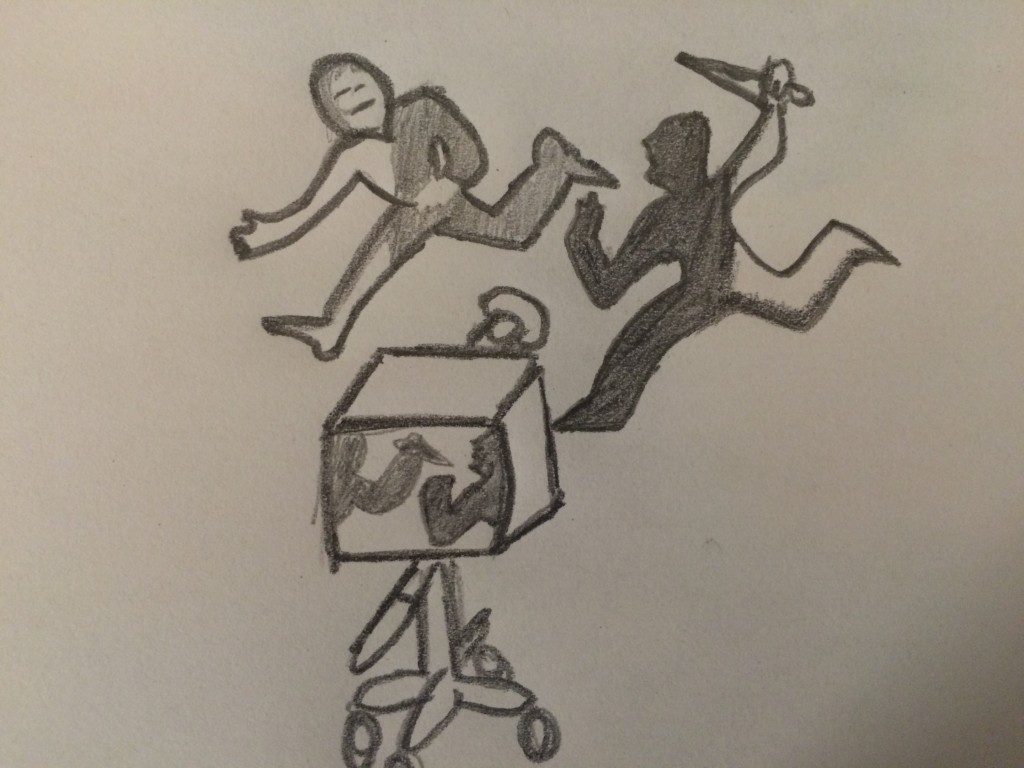The Reluctant Fundamentalist
The Reluctant Fundamentalist, by name presents an ideology which at its very core is conflicting and dichotomous in nature. Fundamentalism, as I have understood it through a reading of history, is a word which originated in description of unfaltering classic theological christian beliefs. To be reluctantly fundamental is by definition a paradoxical state of being. Considering this in a more modern day sense, the term fundamentalism has become associated primarily with Islam, and by direct extension to Islamic extremism, as if classic theological Islamic thought and extremism are synonymous. However, beyond the obvious lack of logical coherence in the use of terminology, the ‘reluctant’ component of the title is one which is more pressing to me since it symbolizes something more. Throughout reading the novel, the question always begged itself: a reluctance for what?
Although I have yet to fully grasp the plethora of cultural, personal and ideological domains which are posited by Mohsin Hamid, the overriding motivations and interactions which drive events are ones which I can, by and large, understand to a great degree beyond their superficial manifestations. Quite critically, the primary force behind the novel is once again the notion of a modern west driven by science and progress as opposed to an eastern backdrop which is diminishing into a state of ruin and downfall. These dichotomous systems are perhaps best portrayed by our protagonist, Changez, who externally presents as a modern, Princeton educated wall street executive, but internally suffers an inability to reconcile his diminishing Pakistani roots and faltering old-family wealth. The description of his Pakistani home as a dilapidated structure of questionable integrity, which holds in the cracks of the wall a history of grandeur and luxury, is perhaps quite a beautifully saddening embodiment of the plight of many eastern nations. The way this is conveyed and presented forms a critical part of the novel, since it is tantamount that western readers understand the sense of loss that many individuals feel with regard to their nations, and often blame on western involvement in these countries, further fueling the hatred and tension which can often be a tangible motivational factor.
Besides this point, however, in the life Changez initially comes to lead in the US, he describes himself as engaging in the usual rituals and rites of passage of the average American college student. However, what was apparent to me early on and only becomes apparent to Changez later, is that the distinctions between west and east go beyond science and traditionalism. While Pakistan is presented as a country with a storied history which is told by the sands of the nation and whispered in the night winds, America is presented as a country obsessed with an image of itself that is attempts to uphold for the sake of an international appeal akin to the ideology of the American dream. Changez is initially enthralled by the acid treated buildings of Princeton as he thinks of himself as a young Pakistani prince who has come to take the university by wonder of his wealth and exoticness. The very foundation of this existence is devoid of reality in a way which allows Changez to divest himself from the realities of life around him and become enamored in the images and ideals which are superficially upheld and presented.
What is more pressing to me, is the realization Changez comes to post 9/11, when the color of his skin, and the image of the American dream became incongruent aspects of existence. Numerous factors come into play at this point, from the need for self-identification through a beard for instance, or the automatic association of his skin color with his being Arab. The novel shows how the rise of a nostalgic America in the wake of 9/11, and the outcomes of this catastrophic event, drastically change what it means to be Muslim in the western world and the perceptions of America in the east. This notion of perceptions is one which I wished to convey through my reflective piece above, particularly in the light of what is happening in the world we live in today.
